Two of the most common concerns we hear from parents are the number of words their child has in their vocabulary and how many words their child uses/combines. While there are many activities to build vocabulary, there are some simple and easy strategies you can regularly use to target increasing your child’s vocabulary and length of utterance.
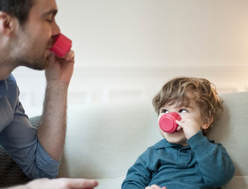
1. Play dumb: Parents are so great at anticipating and knowing exactly what their child wants or needs– event if they are not always using words. Your child may use a variety of tactics to express what they want or need (e.g., pointing, dragging others to what they want, gesture, or whining/screaming). A great strategy that parents can use is playing dumb. Kids love when adults get silly, so pretend that you don’t know what they want. If your child points at goldfish for a snack, pretend you thought they were pointing to something else. When playing dumb, it’s very important to model the word or words you want your child to use in order to get their wants/needs met. If your child is pointing to goldfish for a snack, after you pretend to think they wanted something else (only one time), you need to follow it up with modeling “goldfish” or “fish” for your child to imitate you. Depending on how many words your child has and is using, you can make your model more complex. For example, if your child is only using one-word phrases model “goldfish” or “fish” only. If they are working on using two-word phrases, model “want goldfish” or “eat goldfish”. You can use this strategy throughout the day with your child (during play, books, and daily routines, etc).
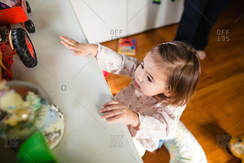
2. Sabotage the environment: This may sound destructive and mean, but stick with us! Something we often do in our therapy sessions is “sabotage” things. Basically, we make it a little more difficult for your child to independently get the toy or snack they want. This encourages your child to use some form of communication in order to get what they want or need. If you are working on building your child’s use and number of words this is a great strategy to do just that. We will often have our toys in bags or boxes that children need help to open. In order to get the item out that they want or need, they have to ask or tell us (e.g., “I want X”, or “Open box.”). You can do this at home with your child by not immediately getting or opening their snack, filling up their cups, or handing them items. Instead, ask what your child wants, model words and phrases you want them to use, or simply wait to open and/or get toys, food, and activities started until they express their want/need.
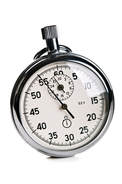
3. Wait time: Many times after parents ask a question, they immediately rush to either give their child what they want or tell them the answer. Instead, try giving your child wait time (up to 10 seconds). Giving children this extra time helps them be able to first process what you are asking/telling them and then respond (AKA, language processing skills). It can feel like an eternity waiting for up to 10 seconds, but is so beneficial for your child if they need that time! Don’t always feel the need to fill the void of your child’s silences when they are trying to talk. Sometimes they just need a little more time to get organized.
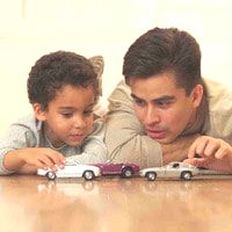
4. Choices: When your child seems unsure of what they want to say or when your child needs help making a request or answering questions, giving them choices can be very helpful. If you ask your child what they want to eat and they don’t answer or just point, ask “Do you want goldfish or banana?” You can also use this strategy during play (e.g., “Do you want the car or the bus?”) and with books to help your child use more specific vocabulary and to answer questions.
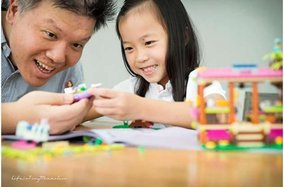
5. Focus on Power Words Not manners: Has your child ever brought you a toy, book, or snack, and just said, “Please?” Although manners are important, many parents focus on these more than helping their child to use specific and intentional vocabulary (or “power words”). Power words are essential to convey meaning. They’re the difference between a child saying, “Help please” versus “Open snack”. Both phrases are 2 words, but one leaves the meaning up to your imagination and the other tells you exactly what you need to know. Many children get stuck on the manners (e.g., please, thank you) and nonspecific vocabulary (more, help, that, there), rather than using high frequency power words (open, push, eat, milk, shoes, trains, dog, etc). Although power words vary from child to child, they are essential to help your child become intentional in their communication. Once they have several power words, it becomes much easier to begin to combine them to help increase the number of words they use to communicate. “Book,” “dog,” and “read” can easily turn into “Read dog book” or “kick,” “blue,” and “ball” can turn into “Kick blue ball.”
Each child varies with both their vocabulary and length of utterance; however, it is important to keep an eye on how many specific words your child has and how many words they typically use to communicate. A small vocabulary or difficulty combining words (see milestones here) can indicate possible difficulties with a child’s motor planning or language skills.
As always, if you have questions or concerns about your child’s development, contact us at The Speech Space! We offer free screenings, which take approximately 30 minutes, and can help identify potential problems.
